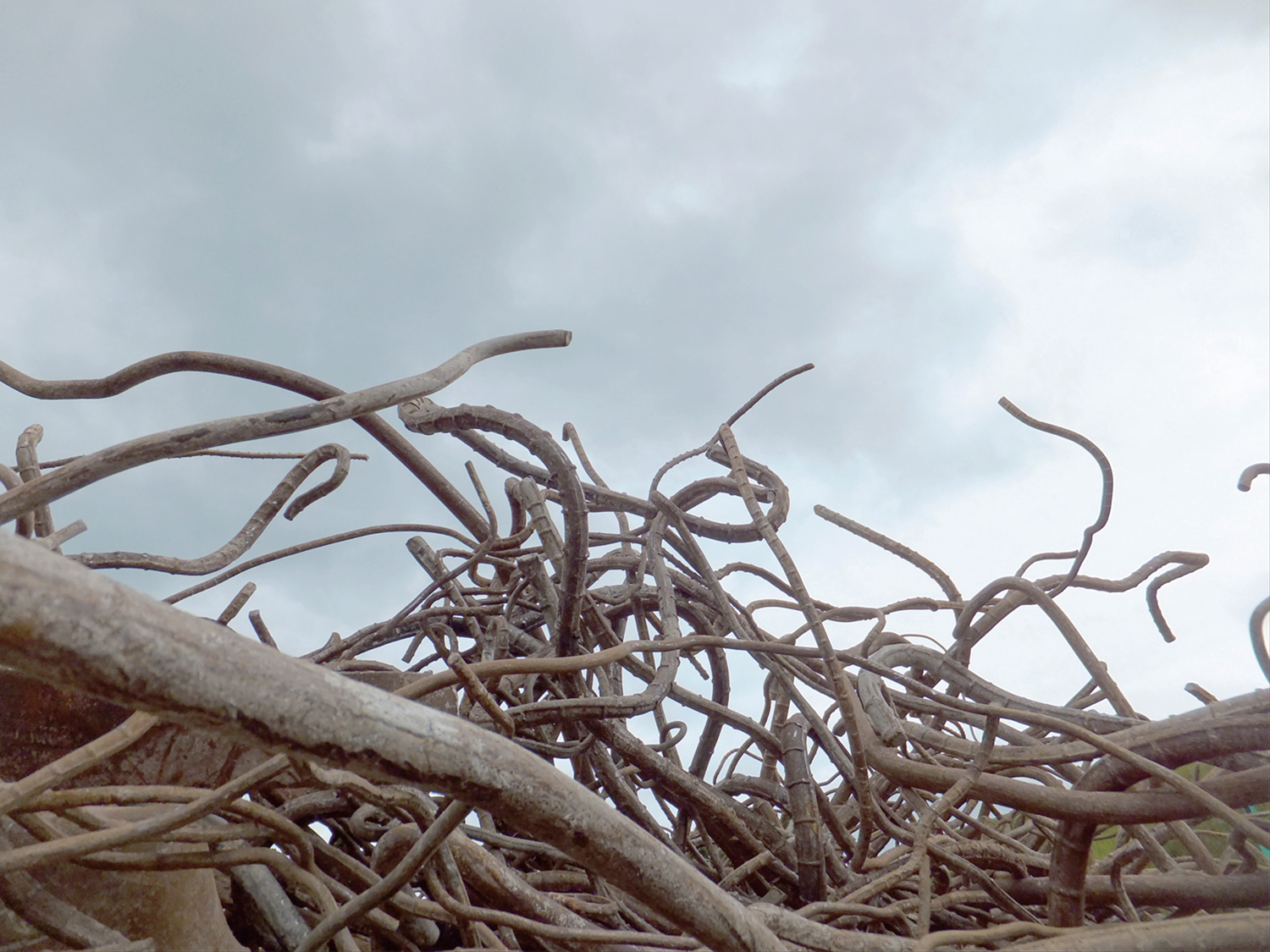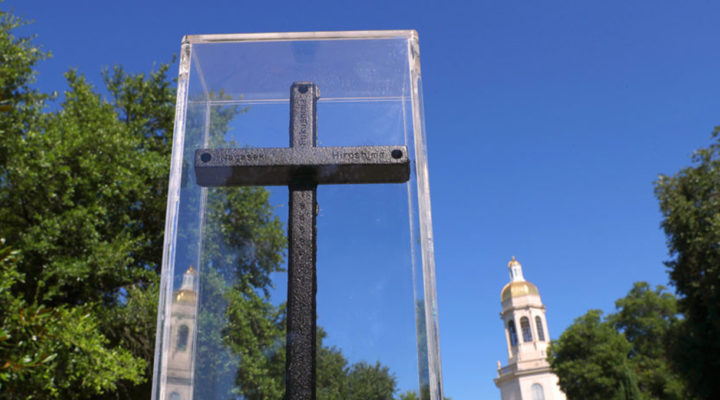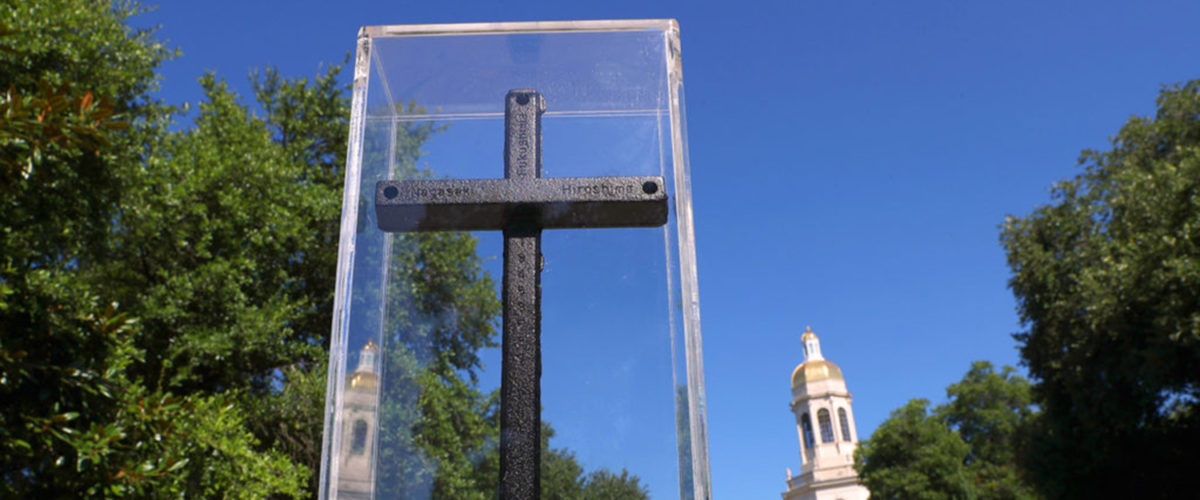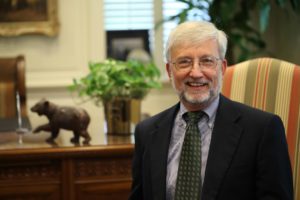It doesn’t look like much more than a simple cross at first glance.
“I was struck by how small it was,” said Kathy Hillman, associate professor and director of Baptist collections and library advancement for Baylor University libraries. “Yet, once we got it over here in the library, by itself in its setting, it became very powerful.”
It is known as the Nagasaki Cross, a small — about 15 inches tall and 7 inches wide — Christian symbol forged from debris found in the wreckage of a middle school located 1,500 feet from where an American plutonium bomb detonated on Aug. 9, 1945.
Hillman said the cross’s small stature throws people off sometimes. But once they start to take it in, attitudes — and hearts — begin to change.
“It is very dark and very stark,” she said of the 6 1/2 pound cross. “Because of that it really evokes in me a feeling of the starkness and the simplicity that was left after the bombing of Nagasaki.”
Knowing that Japanese artist Inagaki Yoshinori used reinforced steel bars from the Chinsei Academy School to create the cross also is moving, Hillman said.
And there is more.
Cast into the right horizontal arm of the cross is the word “Nagasaki.” The left horizontal arm bears the word “Hiroshima.”
“Fukushima” is cast into the vertical bar above the cross piece, in honor of the victims of the 2011 nuclear disaster caused by an earthquake and tsunami.
It’s a lot to take in, Hillman said. “It is small but it’s very impressive because of its simplicity.”
‘A symbol of our unity’
The cross arrived at Baylor this year by way of the International Association of Baptist Colleges and Universities and Seinan Gakuin University in Japan. It is on a journey of one-year stays at Baptist universities around the globe.

The Nagasaki Cross was created by Japanese artist Inagaki Yoshinori out of debris from a school nearly destroyed by the Aug. 9, 1945, bombing of Nagasaki.
It was after the 2011 nuclear disaster that Yoshinori took reinforcing rods from the Nagasaki school, which had been demolished to make way for a memorial site.
In a statement, he said the materials “have been reborn into a new existence by passing them once again through a cast iron furnace.”
The history of the Nagasaki Cross is also a spiritual story, he said.
“Undoubtedly, this reminds us of nothing less than the cross which stood as an instrument of execution on the hill of Golgotha, and our complete purification and cleansing from the curse through Christ’s suffering,” Yoshinori said.
Baylor interim President David Garland said it’s that spiritual dimension of the Nagasaki Cross that he finds inspirational.
“It’s a striking reminder of how the [Christian] cross arises out of total desolation,” he said.
Yoshinori’s work also draws attention to the nuclear explosion that destroyed Nagasaki — an event often lost in the shadow of the preceding U.S. nuclear attack on Japan, Garland said.
“So many know about the Holocaust and about Hiroshima — but not so much [about] Nagasaki,” he said.
And the fact that the Nagasaki Cross is on a tour of Baptist colleges and universities reminds the Baylor community it is part of a global network, Garland said.
“It is a symbol of our unity that reaches across cultures. It breaks down the barriers between those who were once bitter enemies … and becomes the means by which we are united.”




